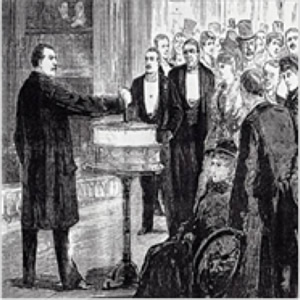The real development of West Molesey only really began in the third decade of the twentieth century. In the eighteenth and nineteenth centuries it did include, however, many nationally known characters amongst its inhabitants.
Mole Lodge, later renamed Mole Abbey and now no more, was the country seat of Sir Robert Carden, owner of The Times and at one-time Lord Mayor of London. Mrs Baker, who lived at “Ivy Lodge” West Molesey during the 1880’s, speaks of Sir Robert as being a “charming white-haired man with a grey-haired daughter” She relates that in their greenhouse they had a model village, with houses only two inches high, and a train that ran beside the village.
It went very fast. When Sir Robert turned on a tap, off went the train and the village people walked. Another notable resident Robert Baddley, the actor, also lived in West Molesey. His house was incorporated into the Rosemary Simmons Homes. He was a contemporary of David Garrick and is chiefly remembered for the Baddley Cake.
In his will he left £100 to the Drury Lane Theatre in order that the cast of whatever play was being acted at the time could partake of the cake and a glass of wine in his memory on Twelfth Night each year. Sir Robert Walpole, who was another nationally known individual. once lived at Molesey Grove, and a century later the house was occupied by the Rt. Hon. Wilson Croker, a political and literary character.
His reviews went on to earn him the hostility of among others, Disraeli. Beyond Molesey Grove, though strictly speaking in the parish of Walton, is Apps Court, where Charles Montagu Earl of Halifax once resided He was influential in the formation of the Bank of England and initiated the much-hated window tax.
This tax was levied on each window of a house if the number exceeded seven. It is not surprising that many of the windows were bricked up. In 1838 the tax for eight windows was 16/6d per annum.

